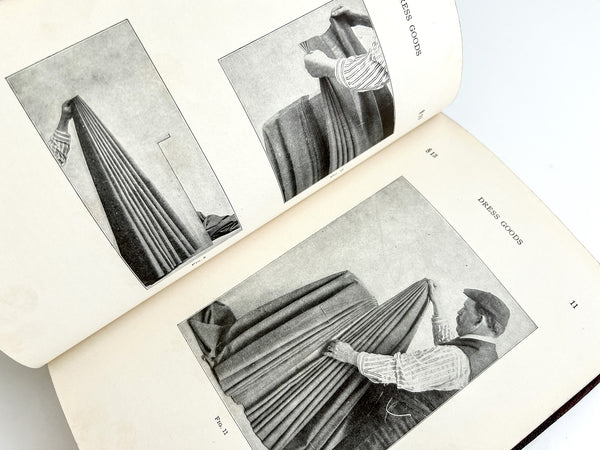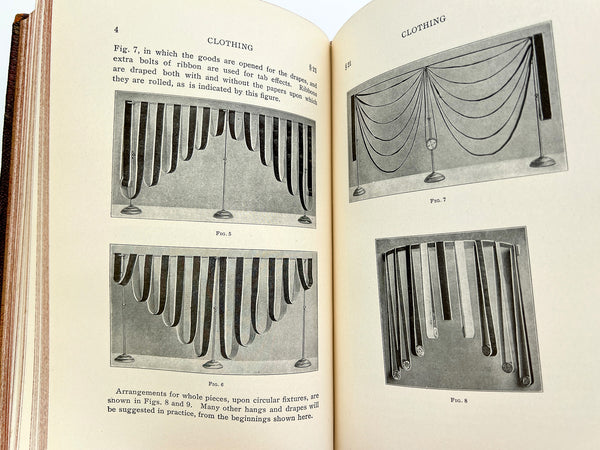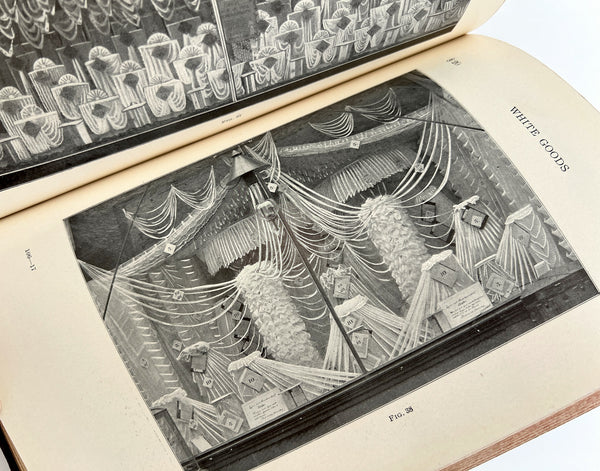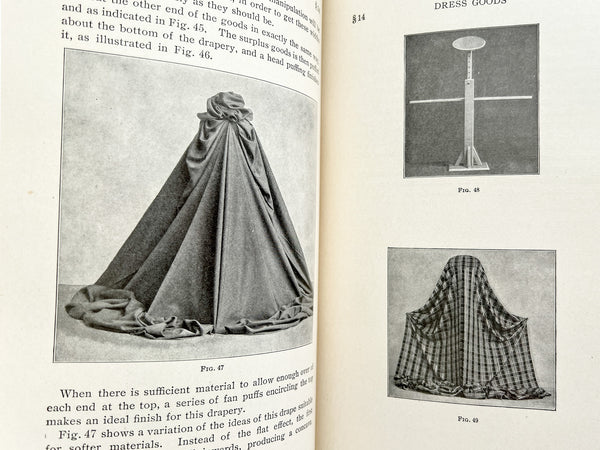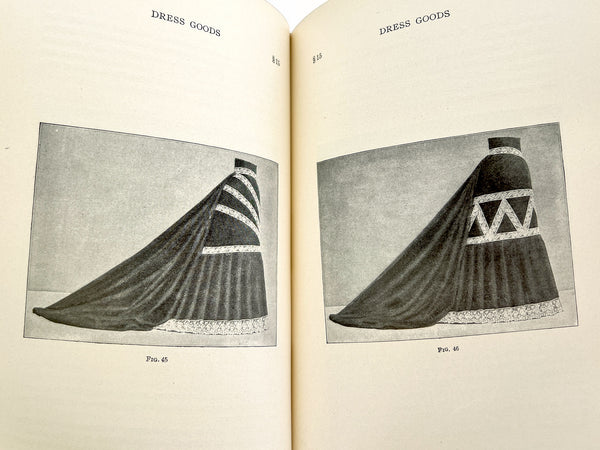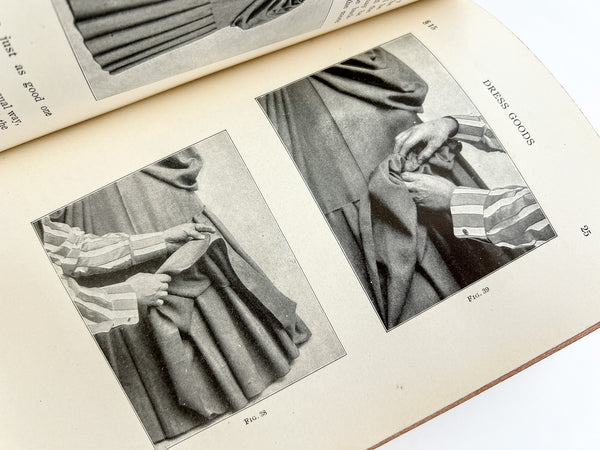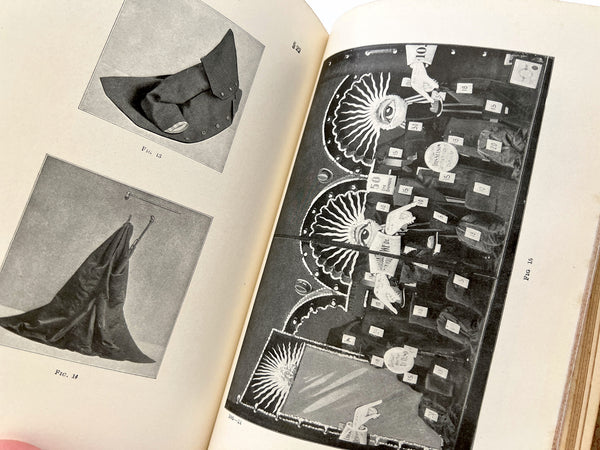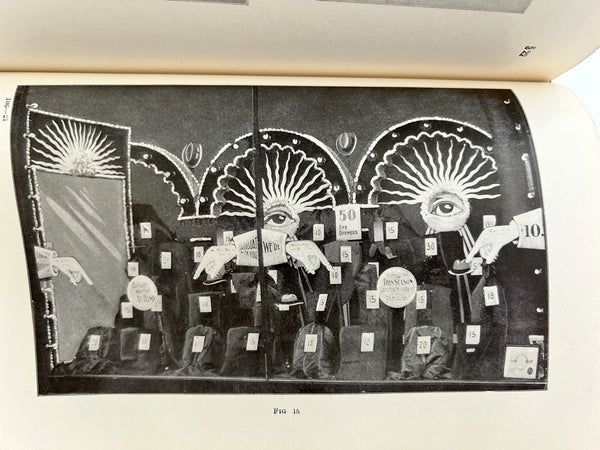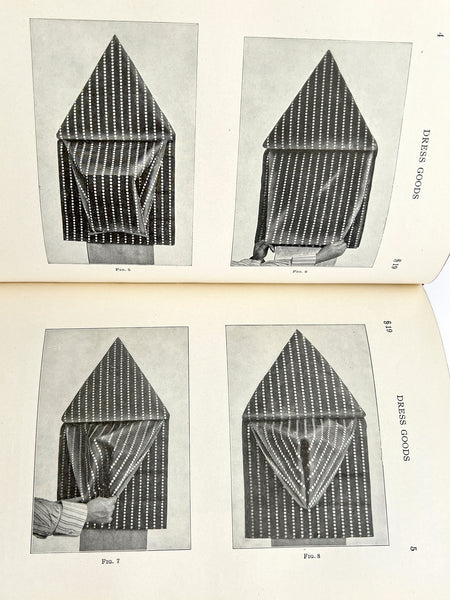I.C.S. Reference Library 106: Dress Goods, White Goods, Clothing
Half pebbled leather with cloth boards; 8vo, multiple paginations. Impeccably illustrated with instructive photographs for manipulating fabric that look like magic tricks. Very Good with rubbing and a chip at the spine head; a few instances of mild foxing. The notoriously crumbly leather has light chipping and wear along the spine but has been treated to minimize further deterioration. Signature to first blank. Also contains guidance for retail merchandising and storefront displays. Absolute wizardry.
The I.C.S. reference books provided indispensable instruction in specialized fields, especially to adults with limited access to higher education. Originally a series of bulletins published by the Colliery Engineer School of Mines after the Mine Safety Act of 1885 required further training for workers, the International Correspondence School emerged to provide a broader scope of courses as business leaders recognized the value of advanced training for workers. For workers, it offered the possibility for upward economic mobility without interruption to earning wages. Courses could be paid for in installments and studies undertaken outside working hours.
I.C.S. promoted practical education on the principle that students learn only the information necessary to perform their jobs (emphasizing the what to do, not the why). Individual series of texts were distributed for each course, but overlaps between similar courses meant students received multiple copies of essentially the same material. A shift was made in 1905 to produce collections of related topics under the “I.C.S. Reference Library” heading. While students would sometimes get content other than what was required for their class, it streamlined the distribution of materials as enrollment surged. The idea was also meant to allow for volumes to be more easily kept up to date, but in hindsight has meant a deal of inconsistency in the topics of the numbered volumes (and the contents therein).
















